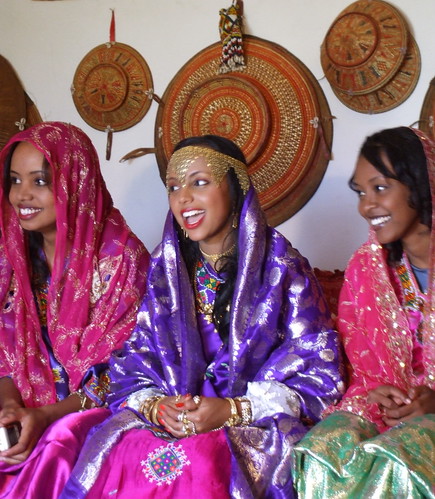















On 11 September, Ethiopians celebrate the New Year. According to legend, the Queen of Sheba chose this date upon her return from Jerusalem. The queen brought with her good news, which launched a new era for Ethiopia. Currently, perhaps, Ethiopia is the only country in the world that uses the Julian calendar not only for church affairs, but also in secular life. The Ethiopian calendar is behind the one familiar to us by seven years and eight months. Religious services in all the churches, both large and small, herald the Ethiopian New Year… in the early morning people dress in traditional clothes, go to church for services, and, only then, go home to a family meal. We’d like to invite you on the first day of the Ethiopian New Year to come with us to this exotic African country and see one of its main attractions… the churches carved into the living rock at Lalibela. Lalibela, located in the mountains in the heart of Ethiopia, is a place of pilgrimage not only for Christians, but for all who are interested in mankind’s historical legacy. Here, far traditional African villages, the Ethiopians built a “New Jerusalem” of monolithic cut right into the living rock at the end of 11th to the early 12th centuries. Lalibela was to become a New Jerusalem after the capture of Jerusalem by the Muslims in 1187. The Righteous Holy King Gebre Mesqel Lalibela decreed this role for the city. That is why the location and names of many of the historical monuments of the city repeat the names of the buildings of Jerusalem; even the local river is called the Jordan.

The Church of St George is carved in the form of a cross, it’s located in a deep pit, and its roof is at ground level. You can only gain entrance to the church through a tunnel.

A fragment of the iconography inside the Church of St George in Lalibela.

More Lalibela photos
https://02varvara.wordpress.com/tag/unesco-world-heritage-site/

No comments:
Post a Comment